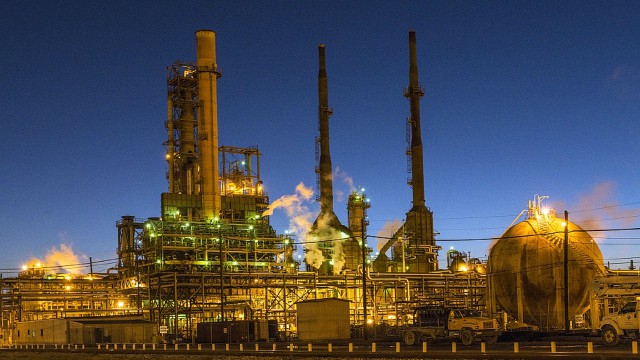Over the past year, oil prices have bucked the downward trend and settled above $60 per barrel for most of 2018. With the RRSP deadline only days away, here are two energy companies to add to your RRSP portfolio.
A sector leader
Suncor Energy Inc. (TSX:SU)(NYSE:SU) is Canada’s leading integrated energy company and one of the largest oil sands producers. The company’s diversified operations consist of oil sands development, conventional and offshore gas production, and refining and marketing under the Petro Canada brand.
At today’s cost per barrel, Suncor is highly profitable with a low cash operating cost per barrel. In 2017, it achieved a cost per barrel of $23.80 — the lowest in over a decade. When combined with capital expenditures (capex), the company is still generating tonnes of cash flow. It recently announced that in 2017 its cost per barrel plus capex was only $34.30 per barrel. This led to record funds from operation of $3.016 billion in the fourth quarter.
Suncor is focused on growing shareholder returns. It is first and foremost committed to the dividend, which has six-year compound annual growth rate of 20% through 2017. Suncor recently announced another 12% increase to the dividend for 2018. In 2017, it also returned $1.7 billion to shareholders in the form of share repurchases.
Analysts expect Suncor to grow earnings by 16% in 2018, and the company has an attractive and scalable shareholder-return program. Suncor is one of Canada’s best and most reliable energy companies, and it would make a great addition to any RRSP portfolio.
A sector laggard
Another energy company worth considering is Cenovus Energy Inc. (TSX:CVE)(NYSE:CVE). Cenovus has struggled with its share price losing approximately 44% of its value over the past year. The primary reasons for its decline relate to its massive acquisition of ConocoPhillips’s (NYSE:COP) oil sands operations for a hefty $17.7 billion. The company had to issue $3 billion in equity and took on a great deal of debt to fund the purchase.
However, the company is aggressively pursuing asset sales and is focusing on reducing its financial leverage. The company is targeting a net debt to adjusted earnings before interest and taxes (EBITDA) below two. In 2017, the company reduced its debt by 31%, and its leverage ratio stood at 2.8 times adjusted EBITDA.
The company has also been cracking down on costs and has lowered its West Texas Intermediate breakeven cost per barrel in each of the past five years. The company initially expected to realize $1 billion in synergy cost savings from the ConocoPhillips acquisition. New president and CEO Alex Pourbais has recently promised additional savings from the acquisition. In its most recent quarter, Cenovus posted a 255% increase in cash from operating activities and record net earnings of $3.4 billion.
All eyes will be on the company’s ability to de-leverage, and investors are taking a wait-and-see approach with the company. In the meantime, Cenovus remains undervalued and provides a great entry point for investors willing to take on a little additional risk for what has the potential for significant returns.







